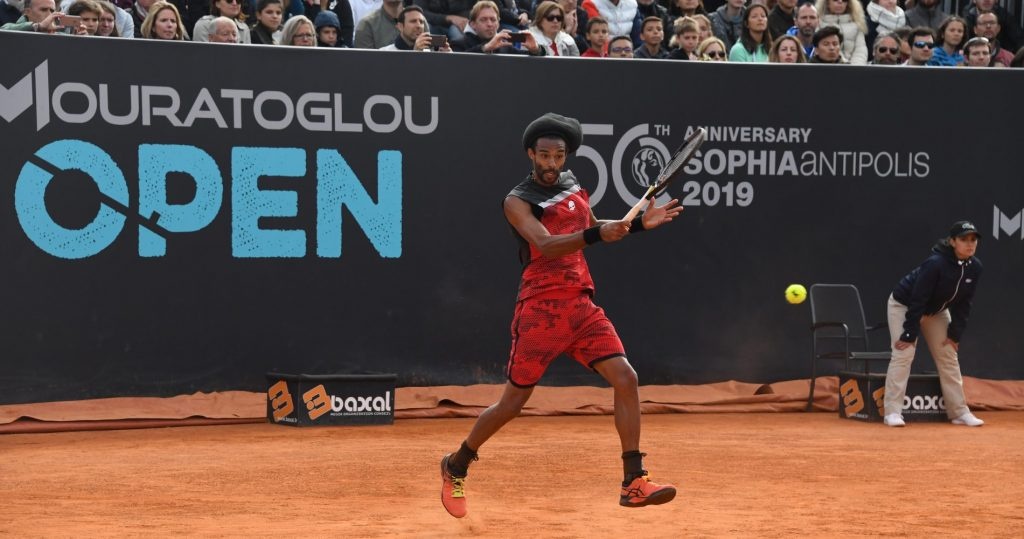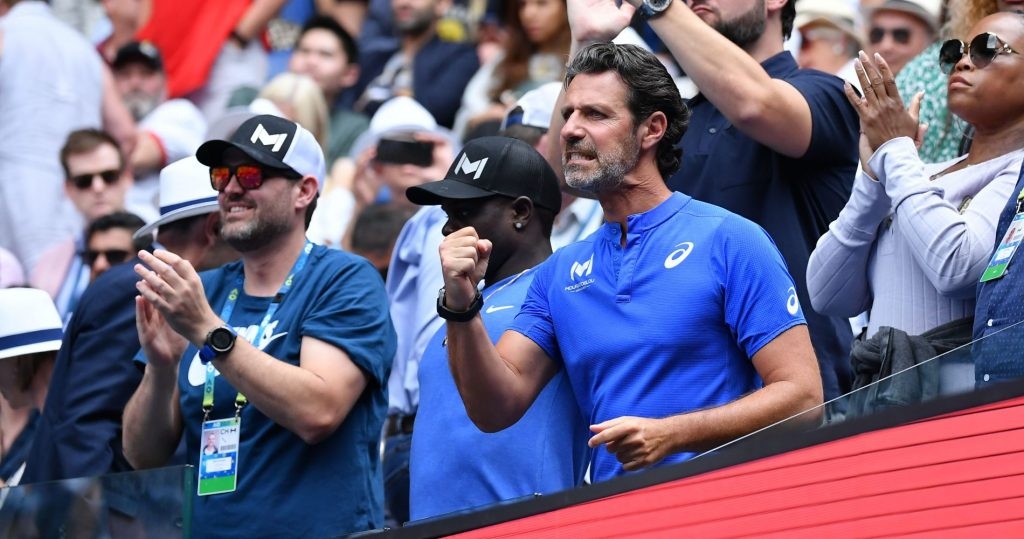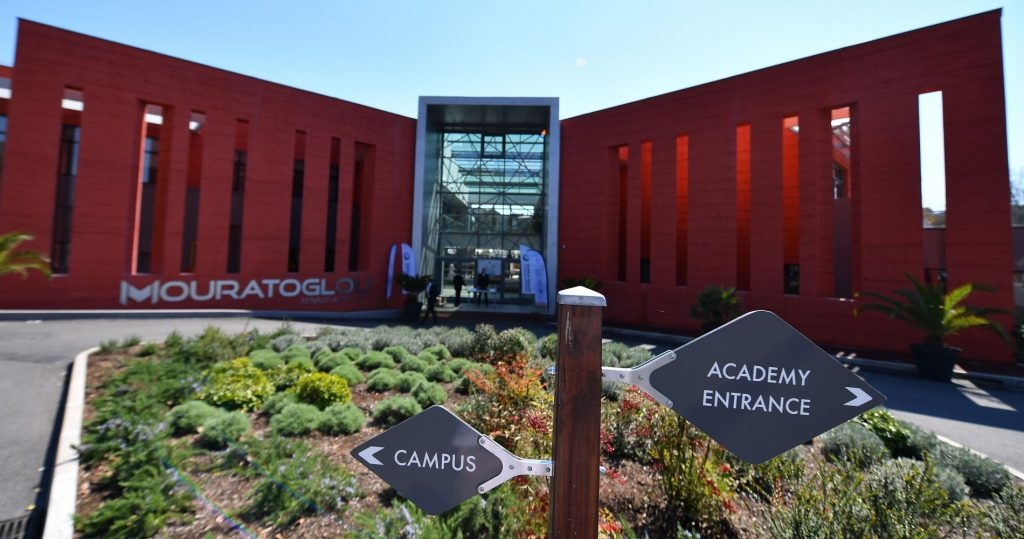Ultimate Tennis Showdown : new tour, new rules, some questions
The Ultimate Tennis Showdown, unveiled on Saturday by Patrick Mouratoglou, means that professional tennis will be back in a month. His announcement raises a lot of questions, the answers to which will come over the coming days.
 “The time for talk is over” claims the UTS website
“The time for talk is over” claims the UTS website
Is the UTS a competitor to the ATP and the WTA?
The UTS circuit is clearly outside the ATP and WTA Tours, but Patrick Mouratoglou did not present it as a competitor to the ATP and the WTA. He is keen to dialogue with them: “I would love to sit down with the ATP and the WTA all together in a few months and think about how we can have this last for next years.“
His move looks more like a way to spur on future evolutions of the game and trigger a debate than a unilateral decision to impose a new competition.
Mouratoglou used the word “laboratory” to describe his initiative, where he will be able to experience the ideas he has to revolutionize tennis experience: “coaching, interactions with the fans, expression of emotions.”
The French coach did not specify whether there will be a women‘s competition, but he mentions the WTA twice, which is a bold inside.
As what occurred for the Laver Cup, this new competition will have to find its spot in the calendar. Then the players decide which event to play.
In a letter sent to all players, ATP coaches and ATP agents, the ATP gave a first indirect reply to the creation of such “privately organised exhibitions matches and tournaments“. “We understand that these will be attractive opportunities to many of you eager to play and to earn income”, the ATP admitted, adding that they are “welcomed“.
Will top players be interested in participating in the UTS?
Patrick Mouratoglou announced on Saturday the identity of the first two players to participate, which later explained their choice in exclusivity for Tennis Majors: Belgian David Goffin and Australian Alexei Popyrin. As of today, we know two more players, that UTS official Twitter account confirmed: French Benoît Paire (ATP #22) and Italian Fabio Fognini (ATP #11). Six are now yet to be unveiled.
Are. You. Not. Entertained?!@benoitpaire is in.#UTShowdown pic.twitter.com/Lbs6RjueSe
— UTS Tour (@uts_tour_) April 19, 2020
Mouratoglou suggested that many of the best players are going to take part in the competition: “It will be ten top players“, he told Josh Cohen.
For the first five weekends of its league, he counts on players geographically close to his Academy. He mentions “French players” and “Monte-Carlo” specifically, where a lot of international players are established.
It may be difficult for the UTS to feature Rafael Nadal, who announced that he was also to launch a tournament soon at his Academy in Manacor, Spain.
Stefanos Tsitsipas is a name to consider. He is part of the Team Mouratoglou training team, as Popyrin, and is already on the competition site.
At the same time, Serena Williams’ coach mentioned that the creation of this competition also aims at helping lower-ranked players to earn more money and to be able to earn a living from tennis. He claimed that “the UTS can be a solution” for them. “We want to redistribute much more, and we will so that the system will also help those players that are below a 100 ATP and WTA to make more money on the long term“, he added.
At a time when the tennis calendar is overfull, the creation of the Ultimate Tennis Showdown implies an overlap with ATP and WTA tours events.
Still, for sure, as soon as the Covid-19 pandemic will have soothed, professional players will continue to organize their season around Grand Slam events, their main goals.

Which new rules are going to be introduced?
Apart from a significant softening of the behaviour rules and the permission of coaching, Patrick Mouratoglou did not mention evolutions of the playing rules.
Tested by the ATP, for instance during the ATP Next Gens finals, 4-game sets, no-ad and no let, are not mentioned by Mouratoglou. In his attempt to attract “a younger fan base“, the 49 years-old French does not seem to count on a shortening of matches.
Mouratoglou’s first lever to seduce younger fans is to take liberties from the behaviour code by “encouraging players to express their emotions.” This behaviour code is a section of the tennis rules. It aims at sanctioning, at the initiative of the umpire or the referee, any non-conforming behaviour or actions of the players on the court. It establishes a range of sanctions for violations, from warning to disqualification.
The possibility for players’ coaches, physios, family and friends to be with them on the court and to talk to the player is the second major evolution. Such changes would change the game from mental tactical standpoints.
His third lever is the possibility for the crowd and the watchers to interact with the players. “I want fans to be able to talk with the players. Not at all times, but at some. To be able to ask questions like what did you do at 30-15?, why did you go or that shot?, whatever”, he told Josh Cohen. Players are more and more used to answer fans questions on social media, but seeing them answering questions during matches would be a significant evolution.

At first, the UTS will be played behind closed doors. But this may not prevent Mouratoglou from starting innovations using technologies, as he mentioned: “I want players to communicate with the crowd, whether the crowd is in the stadium or at home.”
For now, interactions in tennis are mainly limited to the crowd’s cheerings before or after a point. Some players try to foster interactions during their games. Nick Kyrgios – who Patrick Mouratoglou mentioned in his interview – used to ask a person in the crowd where he should serve, during the Washington Open in 2019. Yet some of the players’ intents to share with fans have been for now punished. As for now, the use of a smartphone on the court is forbidden. In 2013, Ukraine’s Sergiy Stakhovsky got fined $2,000 for having taken a picture of a ball mark during a match to post it on social network after the game to contest the line call. This kind of behavior might be part of the tour tomorrow.
As of today, such things as racket abuses, ball abuses, obscenities are prohibited in the ATP behaviour code. In addition to a potential point or game loss during the match, they are then punished by heavy fines.
The ATP behaviour Code details:
-
“Players shall not violently, dangerously or with anger hit, kick or throw a tennis ball while on the grounds of the tournament site except in the reasonable pursuit of a point during a match” (including warm-up)
-
“Players shall not violently, dangerously or with anger hit, kick or throw a racquet or other equipment within the precincts of the tournament site.” (fine up to $20,000)
-
“Players shall not at any time physically abuse any official, opponent, spectator or other person within the precincts of the tournament site.” (fine up to $20,000)
-
“Players shall not at any time directly or indirectly verbally abuse an official, opponent, sponsor, spectator or any other person within the precincts of the tournament site.” (fine up to $20,000)
-
“A player shall not use an audible obscenity while on-site.” (fine up to $5,000)
-
“Players shall not make obscene gestures of any kind while on-site.”(fine up to $5,000)
We don’t precisely know which of these rules will be softened. Limits will still be set: “Of course the only limit is that it should not be dangerous for anybody”, explained Patrick Mouratoglou, referring for instance at racket abuses.
The ATP reminded players raised awareness that “there might be an elevated risk of corruption in some of these environments”, referring at some events such as the Ultimate Tennis Showdown.
In his letter to players on Monday, the governing body for men’s tennis also reminded players that :
• “You cannot bet on any tennis event”
• “You must not facilitate or encourage others to bet on any tennis event”.
• “You cannot be employed or otherwise by a tennis betting company”.
How can the UTS deal with the Covid-19 pandemic while the ATP and the WTA cannot?
On April 1st, the ATP and WTA jointly announced the continued suspension of their tours until July 13, 2020, due to the ongoing COVID-19 pandemic.
They invoked its willingness to “prioritise the health and safety of the tennis community and general public“.
The essence of professional tennis is numerous trips around the world, and tournaments featuring players, staff and fans from all over the world in one same place. In front of such a global pandemic, in reaction to which many countries decided to limit trips and close their boarders, the ATP and WTA tours cannot go on.
David Goffin explained to Tennis Majors yesterday that he thinks this can last for a while: “Events get cancelled one after the other, weeks are flying by quickly. Safety needs to be ensured everywhere in order to play an international tournament. The battle is far from being won. But who knows, so let’s keep the hope alive.”
Playing in front of closed doors addresses the issue of the fans, but the problem must still be tackled for players and staffs.
Organizing a Grand Slam or a big ATP or WTA event requires far more staff than a tournament the UTS would. In their April 1st statement, Wimbledon organizers justified the cancellation of its 2020 edition by invoking their desire to protect “the large numbers of people required to prepare The Championships, from the training of ball boys and girls to thousands of officials, line judges, stewards, players, suppliers, media and contractors who convene on the Grounds”
The French coach already unveiled many health measures to prevent the Covid-19 to spread between players and staff during its event. He mentioned a huge testing procedure: first 15 days before the start of the tournament and then a second testing when the event starts, after a 15-days quarantine.
On the court, he wants to implement measures such as two distinct sets of balls for the players, turnarounds on the two different sides, gloves for ball boys, not speaking about towels and line judges yet. Such issues as accommodation and food service are also yet to be addressed.
Some government decisions look like the greatest threat to the event. Even if the French President Emmanuel Macron publicly exposed an end of the lockdown in the country on May 11th, he did not specify the modalities of the return to normality. A worst-case scenario is an extension of the lockdown. Still playing tennis to be broadcasted on TV is professional tennis players’ job. And doing so in a private place such as the Mouratoglou Academy is not forbidden.
Anyway, if the Ultimate Tennis Showdown effectively succeeds in proposing tennis during this period of restrictions, the ATP, the WTA and the Grand Slam might consider playing behind closed doors, a possibility that they seem reluctant to endorse for now.

On which channel will the competition be broadcasted?
Patrick Mouratoglou pointed out that he “already started to discuss with the broadcasters” but that they were “light” talks. He explained that “we are going to go through bigger discussions” and hopes to communicate “next week.”
The Frenchman gave two potential insights on the identities of future broadcasters when he claimed that people “should be able to stream it for free”, and that it “could be on the internet”.
Last clue: a website named after “UTS live” was unveiled on Saturday.




